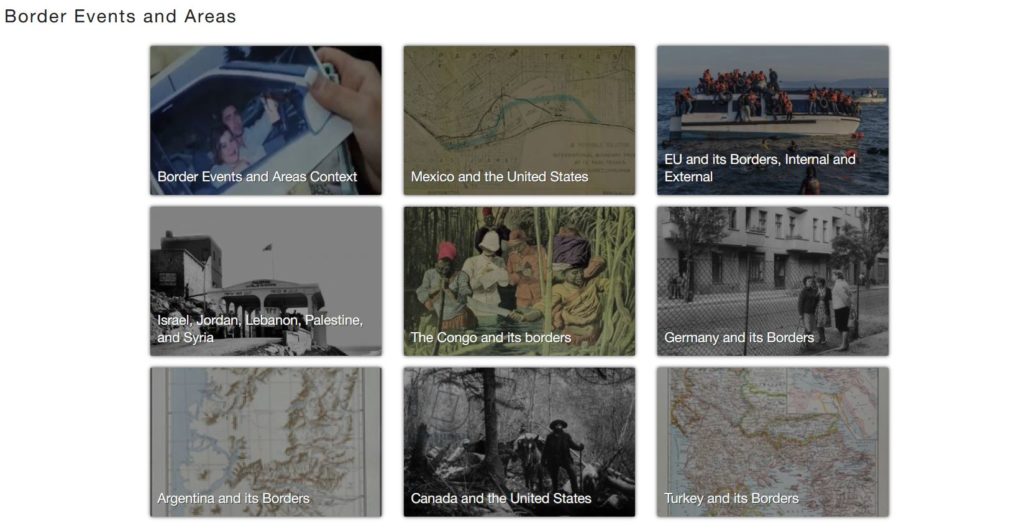Tag: databases
New Purchase: Border and Migration Studies Online.
Despite the COVID-19 related constraints, The UC Berkeley Library continues to purchase critically needed interdisciplinary databases that will enhance our ability to provide information and reference service to an extensive faculty and student body. The Social Sciences Division acquired one such database, and it is Border and Migration Studies Online.
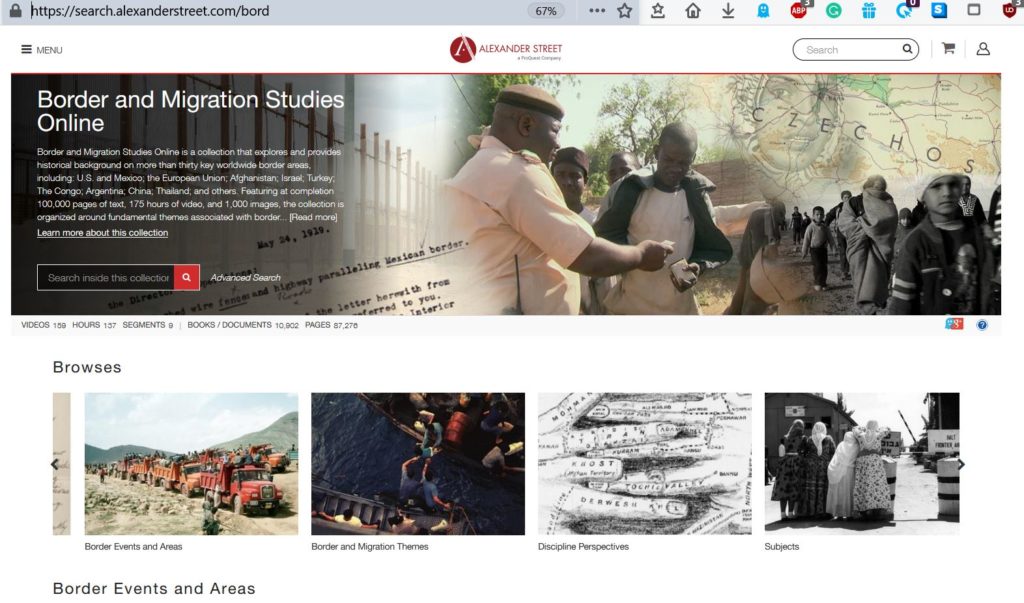 The landing page of the Border and Migration Studies Online.
The landing page of the Border and Migration Studies Online.
The images here are posted for fair academic use only and the copyright for the images belongs to Alexander Street (Proquest).
According to the self-description, the database provides historical context and resources, representing both personal and institutional perspectives, for the growing fields of border(land) studies and migration studies, as well as history, law, politics, diplomacy, area and global studies, anthropology, medicine, the arts, and more. At completion, the collection will include 100,000 pages of text, 175 hours of video, and 1,000 images.
This database is an essential tool to those who provide reference to several area studies related questions. One can find information on what is covered here: https://search.alexanderstreet.com/bord/about
The geographic areas that are covered are in the image below.
The Library Is More Than a Place
by Katherine Y. Chen
When I first began at Cal, I was excited to experience dorm life, take interesting classes, and study with my friends in the library. Before working at the Oral History Center, I viewed the library as merely a physical space to sit and study. However, working at the Oral History Center (OHC) quickly dispelled this false notion.
Through my tenure at the OHC and my experience with research from my classes, I have learned that the library is more than a building in which to study. The library offers a multitude of resources for students — databases encompassing different topics and mediums such as ProQuest for newspaper articles, librarians ready to assist students in planning out papers, and primary sources such as personal interviews. After an informative meeting with a librarian introducing all these resources and more, I quickly began to utilize them in my research. I spoke to a librarian who helped me find multiple sources for my papers; I learned how to navigate the infinite databases accessible to students; and I learned which database to use to find specific types of sources.
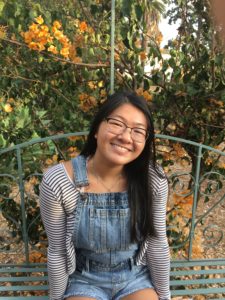
Furthermore, my work at the OHC greatly helped me hone my research skills. I learned how to navigate an archive, how to find specific information, and had the opportunity to help fellow students as well. While promoting the Carmel and Howard Friesen Prize in Oral History Research to my peers, I was able to utilize all the skills I had learned. I helped students navigate the OHC’s archive to find interviews, and gave advice on further research.
I became very familiar with the different projects and subject areas the OHC has to offer. My personal favorites are the Women Political Leaders project and the Dreyer’s Grand Ice Cream project. It was gratifying and empowering to read about the impact women had on politics, especially as an Asian American woman who intends to pursue law. Furthermore, ice cream is a favorite treat of mine, and to learn about how Dreyer’s Grand Ice Cream became widely popular was incredibly interesting.
My experience at the OHC exposed me to the many resources the library has to offer. In turn, I aimed to introduce my peers to the wonders of the library. For example, my friend was writing a research paper for her class and was having trouble keeping her sources in one accessible place. Based on what I learned, I recommended the saving grace of my paper to her — Zotero. Zotero is a program used to store and cite sources, and a librarian recommended it to me after I described having the same issue. Once downloading Zotero, my friend had a much easier time with her sources, and citing them was even easier.
Additionally, I recommended an oral history to another friend of mine who needed to find a primary source for their paper. They needed a source from a specific era, and I remembered reading over oral histories that fit what they were looking for. I sent over the link for the AIDS Epidemic in San Francisco Oral History Project. I wanted to show my peers that the library is not just a building to study in, but a plethora of resources right underneath their noses.
To everyone reading, especially Cal students, take the time to learn more about the resources at the library. Take advantage of all the library has to offer, and I guarantee you will be all the better for it.
Katherine Y. Chen just finished her first year at Berkeley. She is majoring in rhetoric with a minor in public policy.
New Resource: Artifex Press Database of Digital Catalogues Raisonnés
The UC Berkeley Library now subscribes to a new database of digital catalogues raisonnés by Artifex Press. UC Berkeley faculty, staff, and students now have access to the full collection of Artifex Press publications, including catalogues raisonnés on:
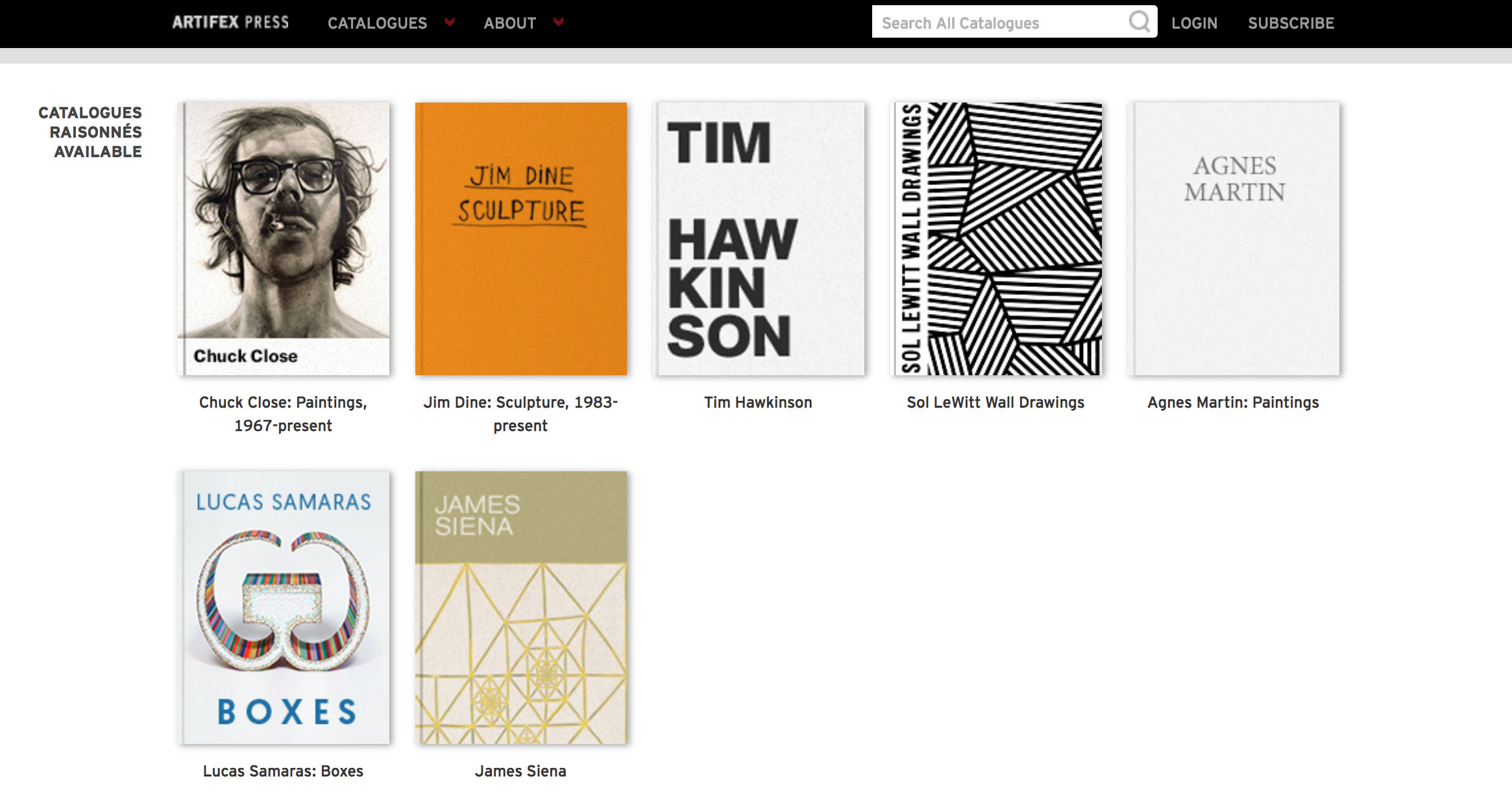
New Trial of the ‘Yale Art and Architecture ePortal’ through July 2019
UC Berkeley has a trial subscription to the new ‘Yale Art and Architecture ePortal‘ through July 2019. The portal includes access to eBook versions of many publications on art and architecture from Yale University Press and beyond. The site can be accessed from a campus IP address or through the VPN at: https://www.aaeportal.com/home
Here is more information about the portal from the publisher website:
“This innovative and dynamic electronic platform provides individuals and institutions with access to important art and architectural history scholarship. With grant funding from The Andrew W. Mellon Foundation, Yale University Press has developed this site to make key backlist and out-of-print titles on a wide variety of subjects more broadly available and easily discoverable within an interactive platform. The ePortal also features scholarship from other leading university presses and museum publishers, creating a meaningful and robust educational experience.”
Some of the features of the Yale Art and Architecture ePortal include:
Read offline by printing or saving chapters as PDFs
Highlight and take notes within online reader
Share links to chapters or books with students
Embedded image zoom within online reader
Full-text searching capabilities
Image searing capabilities
New Resources in Literature

by Taylor Follett
Fall semester is always a time of fresh beginnings — new classes, new faces, and most excitingly for those of us at the library, access to new resources. We hope that the following new databases, books, journals, and much more will be of value to those studying literature. Here are some highlights for undergraduates, graduate students, and professors alike.
New Databases: Photography: The World through the Lens; Classic Mexican Cinema Online; and askART
The Library has subscribed to three new databases of visual content available to all UC Berkeley patrons:
Photography: The World through the Lens

The invention of photography represented a turning point in nineteenth-century culture and visual experience. For the first time, there was a means to capture an accurate and true portrayal of the people, places, and events that would shape history. As a complement to studies of history, culture, media, and many other disciplines, Photography: The World Through the Lens provides the visual evidence to support and supplement written sources.
Photography: The World Through the Lens assembles collections of photographs, photograph albums, photographically illustrated books, and texts on the early history of photography found in libraries and archives across the globe. The nineteenth century was about changes in family and society, invention and scientific discovery, exploration and colonization, urban versus rural life, work, leisure and travel — all this is captured in photographs. Photography: The World Through the Lens delivers around 2 million photographs from Britain, Europe, Asia, Africa, and the Americas.
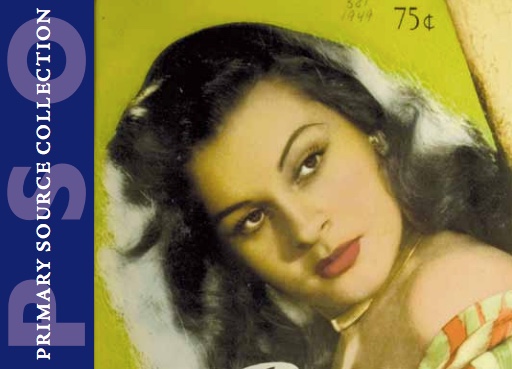

askART provides access to artists’ profiles, images, literature references, biographies, auction records, art for sale and art wanted, essays on important art movements, and statistics on the markets. Millions of auction records and results (from 1987+). 300,000+ worldwide artists.
bioRxiv: a free open access archive for unpublished preprints in the life sciences
- Bioengineering
- Cancer biology
- Cell biology
- Ecology
- Epidemiology
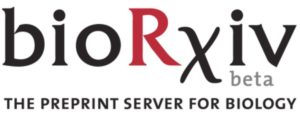 Genomics
Genomics- Molecular biology
- Neuroscience
- Pharmacology and toxicology
- Scientific Communication and Education
Reaxys 2.0 Migration
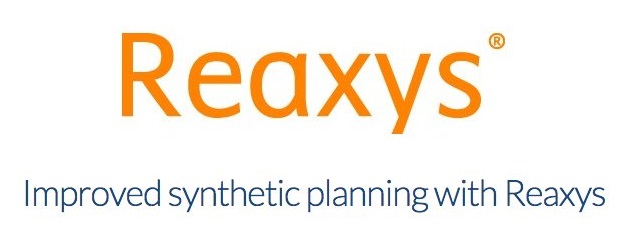
Reaxys is a web-based tool for the retrieval of chemistry information and data from published literature, including journals and patents.Chemists at Berkeley are active users of Reaxys, doing 1000’s of searches/month!
Elsevier has rolled out a new version of Reaxys (Reaxys 2.0) that has a number of enhanced features, including:
- An increasingly simple user interface. The opening page has spaces to (a) type in the search query in a search bar or (b) type in the name of the structure or draw the structure.
- Search functions using the querylets to increase the specificity of the search and reduces the time that the user has to filter the results post search.
- Search functions that contain auto suggest. Similarly it also searches for singular/plural and synonyms
- Using Boolean operators (obviously one of Elsevier’s strengths)
- Listing hits in the initial screen (post search). No secondary search needed.
- A big increase in the number of searchable Asian patents
The migration is Reaxys 2.0 is ongoing, but migration should be completed by November 30, 2017. Soon UCB users will be directed to the new interface, but will continue to have the option to use the old interface for the foreseeable future.
Romance Language Collections Newsletter no.1 (Fall 2016)
What’s new in the Library for Fall 2016?
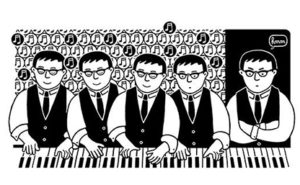
The graphic novel Le piano oriental by Zeina Abirached will be on display in the Doe Library exhibition Beyond Tintin and Superman: The Diversity of Global Comics opening September 19.
Welcome back everyone! Here’s a brief sum-up of new services and library resources with a focus on the Romance languages and southern European studies in particular.
New Blog – Over the summer the Library migrated all of its blogs to WordPress. From this point forward, please look here for all Romance Language Collections news. If you choose not to subscribe to the blog, don’t worry. I usually forward the most important posts to your respective department listservs.
Electronic Resources
OpenEdition Books – With a combination of generous discretionary and endowment funds, the Library was able to acquire the complete ebook catalogue of this open access book initiative based at Université d’Aix-Marseille. We now have enhanced and permanent access to more than 2700 open access books (most in French but also in Italian, Spanish and Portuguese) that can be read in four different formats (epub, pdf, html, or reader) from prestigious academic presses like CNRS Éditions, Presses Universitaires de Rennes, and l’École française de Rome. We have also have become partners in an acquisitions policy that both supports sustainable development of OA and that respects the needs of teaching, research and learning communities.
OpenEdition Journals – Also known as Revues.org, the Library has purchased permanent access to the 140 journals available through OpenEdition’s freemium model, eliminating moving walls and gaining similar formats enhancements as the ebooks. Representative titles include Arzanà: Cahiers de littérature médiévale italienne, Cahiers d’études romanes, Flaubert: Revue critique et génétique, and L’Atelier du Centre de recherches historiques.
Ebooks on Casalini’s Torrossa platform – Besides the Italian ebooks the Library receives through its subscription to Editoria Italiana Online, we added 200 additional titles last spring. Casalini Libri also unveiled a new reader in July which greatly improves the readability (especially on smartphones and tablets) of the near 2500 titles in Berkeley’s collection of Italian ebooks.
Kanopy and the Media Resources Center – New films and documentaries in the Romance Languages from not only Europe but also Africa and Latin America are regularly added to this online streaming service. Beginning this semester, check-out periods for DVDs and VHS tapes from the MRC will be extended to 7 days for faculty, lecturers and graduate student instructors!
Continue reading “Romance Language Collections Newsletter no.1 (Fall 2016)”
Access Scopus database for research in a variety of fields

Find more results and uncover trends in your field through Scopus, a large abstract and citation database of peer-reviewed literature.
The UC Berkeley Library is now providing access to this tool covering fields of science, technology, medicine, social sciences and arts & humanities. More than half the content originates outside North America and the content includes journals, conferences, trade publications, and book series.
The database provides various ways to link to the full text of documents, including via UC-eLinks. Scopus offers several features including tools to track, analyze, and visualize your research. Download references into a number of reference managers.
You’ll find Scopus in OskiCat and the A-Z List of Databases.
Post contributed by Jean McKenzie, Acting AUL, Collections
